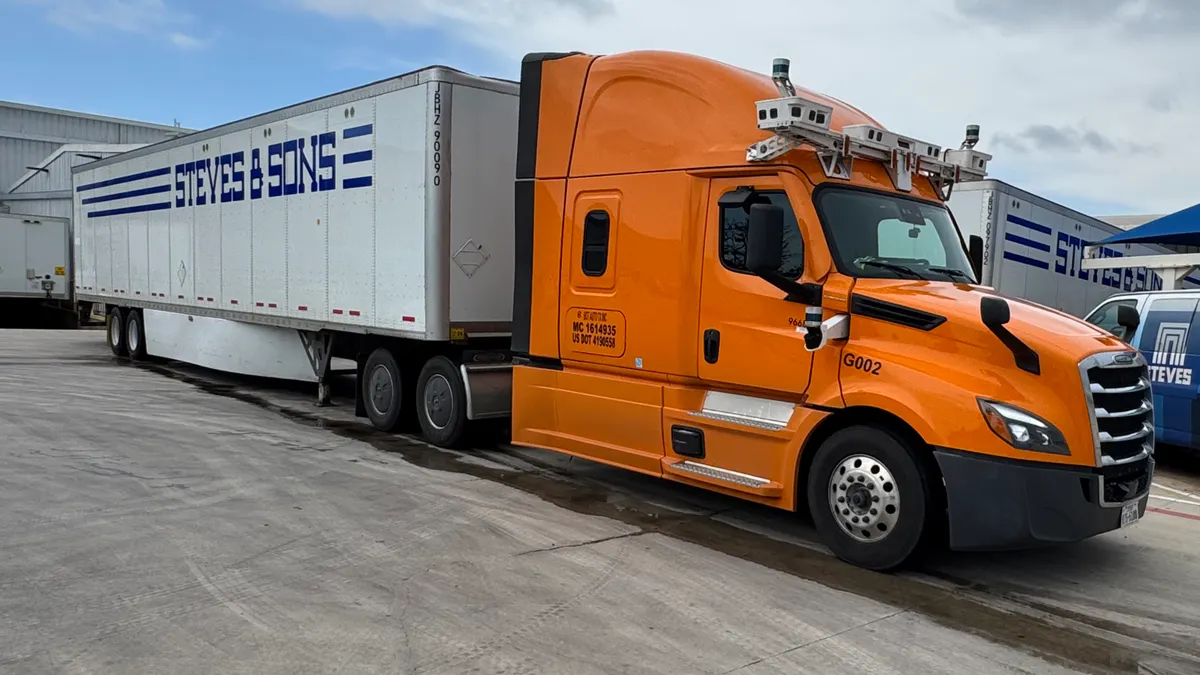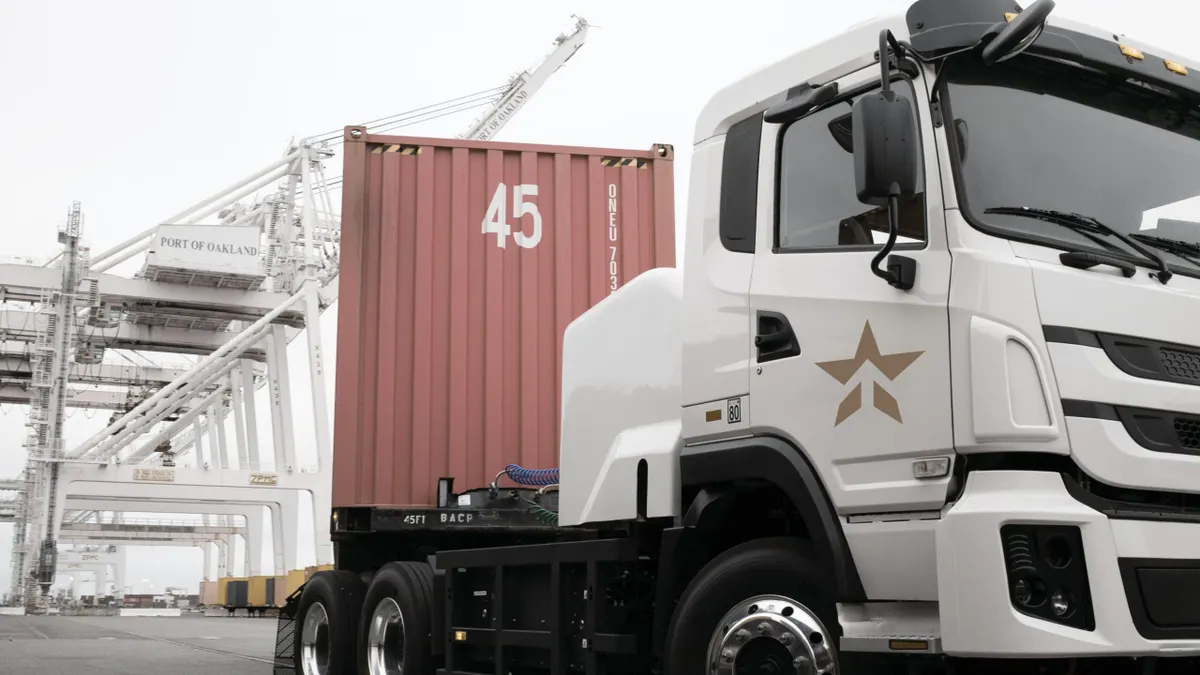Some in the trucking industry expected — or at least hoped — freight demand would rebound in the spring.
But the inflection point hasn’t arrived, Morgan Stanley analysts Ravi Shanker, Christyne McGarvey, Katherine Kallergis, Nancy Hipp and Gillian Levine wrote in an April 4 research note.
“A month ago, we expected [management] teams to dismiss a soft 1Q print and sound great about 2Q and beyond,” the analysts said. “Now we expect to hear 50 shades of ‘we have no idea’ on the conference calls.”
A 5.4% sequential decline in the American Trucking Association's March for-hire truck tonnage represented the largest monthly drop since April 2020. Falling home construction, decreased factory output and soft retail sales all contributed, according to ATA Chief Economist Bob Costello.
If (and how much) executives lower expectations for next quarter and beyond will be the focus of carriers’ earnings calls in the upcoming weeks. Analysts and other industry observers are closely watching demand and other trucking indicators, and we’ve rounded up four trends for readers to watch as the calls approach.
1. How long will tonnage stay soft?
It’s not yet clear how much of the overall March softness is attributable to weather disruptions, especially in California, where atmospheric rivers likely disrupted produce season, versus shippers holding off on restocking decisions in a challenging economic climate, the Morgan Stanley analysts wrote.
Diminished restocking plans also represent a concern for the second half of the year.
For all LTLs, but Saia in particular, the market shows signs of optimism on tonnage, but margins could be at risk, the analysts wrote.
Trucking entered a freight recession in Q3 2022, and “there are few signs yet that we have the economic activity to bounce out,” Jason Miller, associate professor of logistics at Michigan State University’s Broad College of Business, said in an email.
He noted signs of softness in the industrial, construction and manufacturing sectors, alongside persistent inflation.
“Ton-miles have dropped ~2% from this time last year, which is a steeper drop than in the 2019 freight recession,” Miller said. “I just don't see an optimistic case for Q2 brewing.”
2. Strength — or weakness — of underlying industries
J.B. Hunt, which this week reported a “freight recession” dampened Q1 revenue, is the best bellwether for the intermodal sector, Miller said. Knight-Swift Transportation Holdings, Heartland Express and Werner Enterprises earnings should provide good indicators for overall TL volumes, he said.
Werner has exposure to building materials and discount retailing, which should make for interesting results, he said.
“Landstar has more industrial exposure, and certainly Daseke is entirely industrial, so those two carriers will give us a broader sense of where the industrial sector is,” the logistics professor said. “PAM is a good proxy for the motor vehicle manufacturing space, which should be pretty strong.”
On the LTL side, Old Dominion Freight Line is “the gold standard to examine,” Miller said.
3. How well do carriers maintain pricing discipline?
With fuel prices down in Q1 from the same quarter YoY, most carriers are feeling pressure from customers to lower surcharges and provide other discounts, said Satish Jindel, an LTL industry expert.
LTL, which typically does better than TL in pricing maintenance, does face some spillover in expectation from customers who are seeing TL rates go down, he said.
In the Q1 earnings season, Jindel will most closely be watching Old Dominion and XPO.
Old Dominion, which Jindel called the “darling of the industry,” tends to maintain pricing while emphasizing to customers its value proposition, he said. And the performance of XPO, which has a different CEO and fewer business units than it did in Q1 2022, will illustrate how well it is harnessing technology to improve business.
“Let's see if they are able to hold onto [pricing] in spite of some changes in the number of shipments and the total demand,” Jindel said.
4. Follow-up to mega M&A?
Knight-Swift Transportation Holdings’ announced acquisition of beleaguered U.S. Xpress made a cannonball splash in March. The Morgan Stanley analysts expect the deal to be approved, they wrote in their financial note.
Expect analysts to have plenty of questions about the integration process — and what further M&A moves the TL giant and others might have in mind.
Executives’ answers could reveal insights about the market conditions driving and thwarting deals.
“We expect a miss in 1Q but focus will be on [Knight-Swift’s full-year] guidance,” the Morgan Stanley analysts wrote. “We will also be looking for more color on the USX acquisition and synergies there.”




















